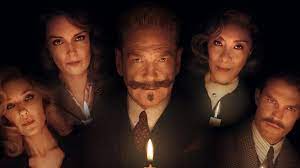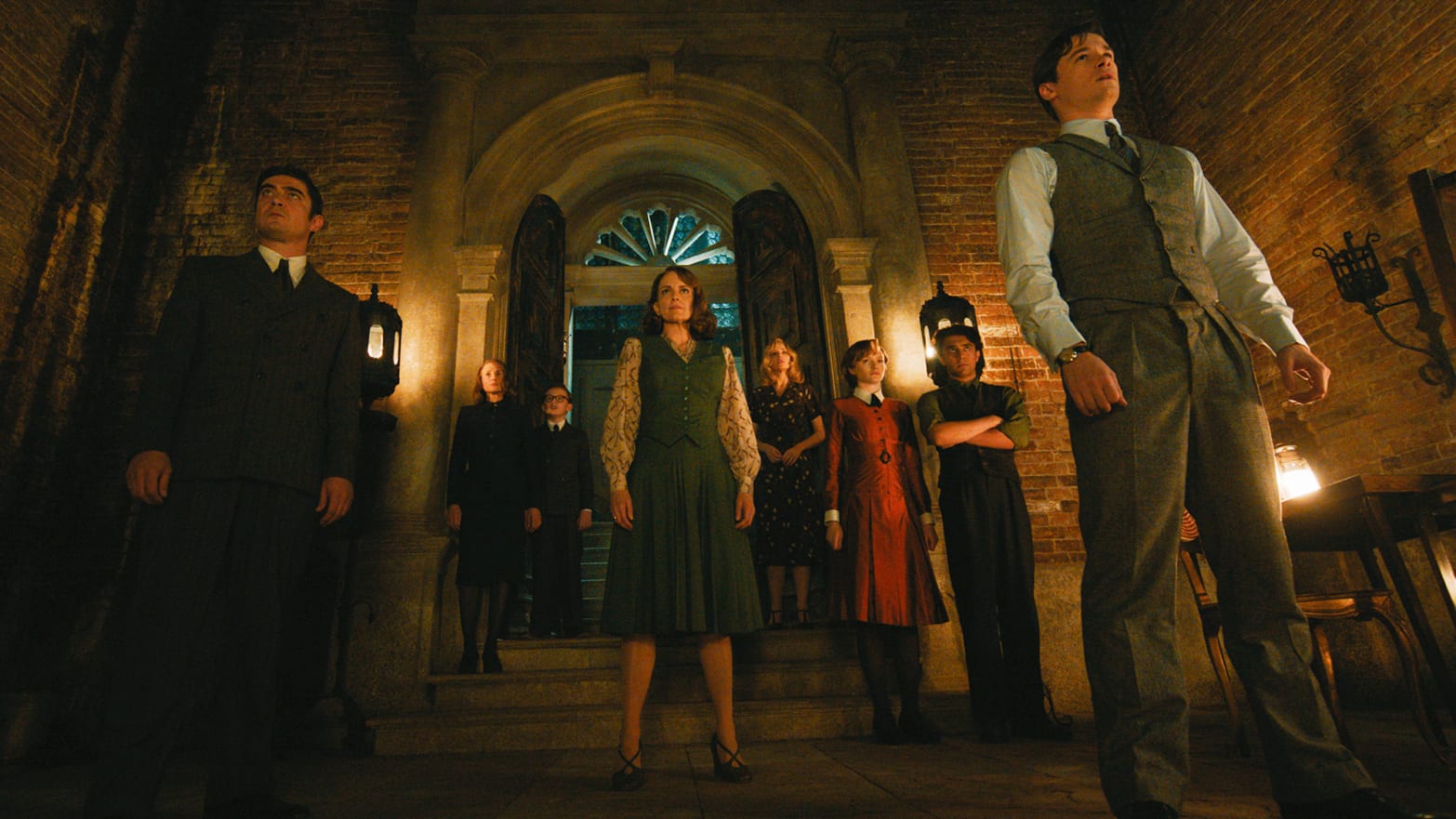Reviewed by Cliff Homewood
This film is being promoted as a horror. Is it? No. Its horror elements are the tricks of a séance that Poirot is called in to debunk and the obligatory vague scene at the end. The scariest thing in it is Brannagh’s moustache (which appears to have shrunk).
 The film starts well, with humour and an old friend, Ariadne Oliver, a mystery novelist. Agatha Christie used this semi-regular character to air her frustrations and mistakes. We then go to a fun children’s Halloween party, well realised as Hollywood’s idealised parties usually are. We are introduced to the suspects, getting a line each as we cut from one to the next. This is where the film started to lose me, not staying with characters enough to develop and with a child that talked like an adult. I visited slumberland, the film is slow, albeit with some nice references to the war. The characters two dimensional and the story mechanical.
The film starts well, with humour and an old friend, Ariadne Oliver, a mystery novelist. Agatha Christie used this semi-regular character to air her frustrations and mistakes. We then go to a fun children’s Halloween party, well realised as Hollywood’s idealised parties usually are. We are introduced to the suspects, getting a line each as we cut from one to the next. This is where the film started to lose me, not staying with characters enough to develop and with a child that talked like an adult. I visited slumberland, the film is slow, albeit with some nice references to the war. The characters two dimensional and the story mechanical.
I enjoyed both previous Brannagh Poirot adaptations. This lost the lightness of touch of previous instalments, perhaps due to the intention of shaking it up with the horror element. The melancholic music didn’t help. The resolution felt pasted on and contrived. Raymond Chandler said of Agatha Christie’s endings ‘Only a half-wit could guess it.’
Is it a good film? In my book no, although it has reviewed well. A horror fan reviewed as ‘Zzzzzzzzz’ so may depend what type of film you are expecting to see.
 A Haunting in Venice is an adaptation of Agatha Christie’s Halloween Party. Agatha Christie had only the limits of her imagination but set in England. Maybe writing based on what she knew (she must have seen a lot of murders!) Yet the film, with budgetary restrictions, moved it to Venice. Film’s a visual medium and Venice is a good setting. It’s a very loose adaptation, the original for instance contained multiple child murders, which would have made it more horrific. New characters, twists and motivations all added. They intended to make fresh for Agatha Christie fans who would probably have preferred fidelity. ‘We had done two pretty faithful adaptations of two pretty famous, pretty big books. And Michael Green, the writer, and Kenneth Brannagh …’ Executive Producer James Pritchard states, ‘felt that we should maybe surprise our audience with this and try something a bit different.’
A Haunting in Venice is an adaptation of Agatha Christie’s Halloween Party. Agatha Christie had only the limits of her imagination but set in England. Maybe writing based on what she knew (she must have seen a lot of murders!) Yet the film, with budgetary restrictions, moved it to Venice. Film’s a visual medium and Venice is a good setting. It’s a very loose adaptation, the original for instance contained multiple child murders, which would have made it more horrific. New characters, twists and motivations all added. They intended to make fresh for Agatha Christie fans who would probably have preferred fidelity. ‘We had done two pretty faithful adaptations of two pretty famous, pretty big books. And Michael Green, the writer, and Kenneth Brannagh …’ Executive Producer James Pritchard states, ‘felt that we should maybe surprise our audience with this and try something a bit different.’
A Haunting in Venice proved that Michael Green, whilst previously a good adaptor, is not as good a writer as Agatha Christie.
Unless the puzzle element fascinates you don’t bother with A Haunting in Venice as the film won’t.

